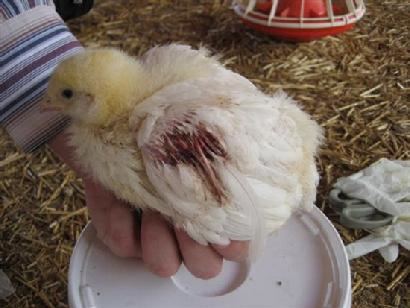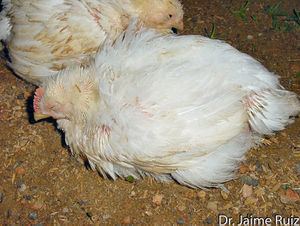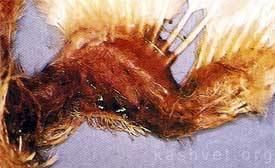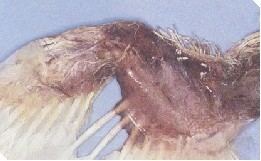Group Group II (ssDNA) Genus Gyrovirus Higher classification Gyrovirus | Family Circoviridae Scientific name Chicken anemia virus Rank Species | |
Similar Circoviridae, Porcine circovirus, Gallid herpesvirus 1, Avian infectious bronchitis, Avian adenovirus | ||
Chicken anaemia virus, or CAV, is a member of the circoviridae family. It is a non-enveloped icosahedral single stranded DNA virus.
Contents

Infection causes anaemia, bone marrow atrophy, and severe immunosuppression in poultry as the virus affects the production of red blood cells (RBC), white blood cells (WBC) and platelets. Clinical signs of CAV infection are predominantly found in young chicks due to vertical transmission from the breeder hens whose maternal antibodies have not yet formed following exposure. Clinical disease is rare today because of the widespread practice of vaccinating breeders, but the subclinical form of the disease - which normally affects birds more than two weeks of age following horizontal transmission of the virus via the oro-faecal route - is ubiquitous. Additionally, the virus is very resistant in the environment, making elimination very difficult. It is not a zoonosis. The vaccine has the ATCvet code QI01AD04 (WHO)

The disease/virus has many names including chicken anaemia, blue wing disease, anaemia dermatitis syndrome, chicken/avian infectious anaemia, haemorrhagic aplastic anaemia syndrome, infectious chicken anaemia, chicken infectious anaemia virus and chicken anaemia agent.

Clinical signs and diagnosis

Clinical signs include a pale comb, wattle, eyelids, legs and carcass, anorexia, weakness, stunting, unthriftiness, weight loss, cyanosis, petechiation and ecchymoses, lethargy and sudden death. Neurological signs include dullness, depression and paresis. Subclinical infection my cause reduced growth rates and other health problems.
A presumptive diagnosis can be made based on the clinical signs and a low haematocrit reading (<27%). Virus isolation, increased antibody titres, immunoperoxidase staining, ELISA, PCR or indirect immunofluorescence can be used to confirm the presence of the virus. Post mortem finding should show significant atrophy of the lymphoid organs, haemorrhage throughout the tissues and pale watery bone marrow.
Treatment and control
There is no specific treatment for infected birds. Culling of infected birds is normally performed in infected commercial flocks. Birds that have been infected develop immunity to the virus.
Vertical spread of the disease can be controlled by the vaccination of breeding hens with both live attenuated and wild vaccines. These vaccines reduce the vertical transmission rate. Appropriate hygiene and biosecurity measures should be employed to control the disease.
